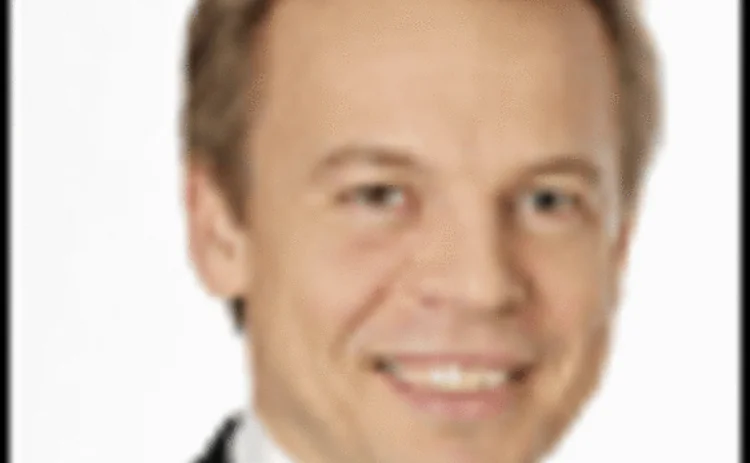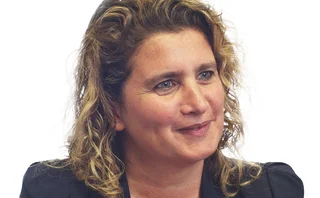
Pension funds swoop on swaps
European pension funds grappling with ever-increasing shortfalls are starting to dabble in derivatives as a way of bridging the funding gap, and one area of particular interest is the inflation-linked and interest rate swap market, as Credit reports

Pension fund investors around Europe have a problem. The latest figures from actuarial consultancy Lane Clark & Peacock show that European pension fund deficits are growing and that funding shortfalls for the UK's top 100 companies are topping £37 billion (EUR54.3 billion). The realisation for pension scheme managers is that they can no longer only rely on conventional asset classes to effectively match their assets with their liabilities. Consequently many institutional investors are looking to derivatives - particularly inflation-linked and interest rate swaps - as a way of mitigating their cashflow risks.
Indeed, figures from Sweden's central bank, the Riksbank, show that trading in Swedish interest rate swaps increased by 352% between 2001 and 2004, while trade in all derivatives rose by more than 55% over the same period. From the start of next year investors in Sweden must mark their liabilities to market because of the introduction of new solvency regulations.
At the same time, approximate calculations from UK consultancy Watson Wyatt show that activity in the sterling inflation-linked swaps market has increased by some 400% this year on the previous 12 months with volumes expected to reach as much as £15 billion by year-end.
More specifically, the UK's £3 billion Merchant Navy Officers Pension Fund is to appoint a single manager to run a swaps-based mandate worth £200 million, while retailer Boots, which shifted all its pension fund assets into bonds in a high-profile move in 2001, is making plans to tap both the inflation-linked and interest rate swaps markets.
"The pension scheme intends to allocate 15% of its assets to equities and property," says Boots in its latest annual report. "The remaining 85% of assets will be invested in a diverse portfolio of high-quality investment-grade bonds of varying maturity with interest rate and inflation-linked swaps used to improve matching characteristics. This will provide a relatively good hedge against liabilities on an FRS 17 accounting basis." Under the actuarial assumptions, however, the group says it has a funding deficit of £83 million that it has agreed to make good with contributions of £11.7 million over 10 years.
Dutch demand
On top of this demand from Swedish and UK investors, the implementation of new solvency rules in the Netherlands - which will now come into effect in January 2007 rather than January 2006 - is forcing Dutch funds to think about other investment strategies. Under the rules, known as Financieel Toetsingskader (FTK), funds will have to pass three interrelated tests: a minimum funding test, a solvency test and a continuity test in addition to having to calculate their liabilities at current market rates instead of a fixed 4% rate.
"Pension funds in the Netherlands are focusing more than ever before on how well their assets are set to meet their liabilities," says Gerard Roelofs, partner and head of investment consulting, at Watson Wyatt in Amsterdam. "This is related to the new set of regulations which were meant to take effect from 2006 and on the changes in internal accounting rules due to IAS 19 and IFRS. With these new rules, interest and inflation rates become major, measurable risks and constructing a client-tailored portfolio of swaps to match the duration or the cashflows of the funds' liabilities greatly diminishes that mismatch of risk."
ABP, the EUR170 billion Dutch pension scheme for government employees, has hinted that it may use interest rate swaps to combat the expected rise in duration risk that it and the rest of the Dutch marketplace will face.
"Our asset holdings are clearly shorter in duration than our liabilities and that presents a problem," Wim Barentsen, the fund's head of economics and financial markets, said at the World Cup of Investment Management conference in Barcelona earlier this year. "One solution we have is to reduce our exposure to equities and increase our allocation to long bonds but that will have a negative affect on yields. A second option is to change our asset mix more regularly and become more dynamic but we do not think that is the job of a pension fund. And a third choice is to use interest rate swaps, which means we would become vulnerable to interest rate increases, while the size of the swap would be huge." According to Barentsen, the fund has not yet decided on any one solution but interest rate swaps are a particular area of interest.
Indeed, if Denmark's move to fair-value accounting in 2001 is a guide as to how Dutch and Swedish funds might react to regulatory change, it is likely that both sets of investors will become large consumers of interest rate swaps.
"All of the big Danish funds are now using interest rate swaps with only one or two exceptions," says Rune Sanbeck, head of institutional clients at Danske Capital in Copenhagen. "And I think we will see the same thing happening in the Dutch and Swedish markets. There are a couple of large pension funds that have decided against entering into swap contracts but those funds are in good shape. The fewer problems a scheme has with its liabilities, the less likely it is to use swaps unless it thinks interest rates will fall."
Worth the risk
But most funds do have problems. "Swaps do not come cheap but they are an insurance policy for these funds," he continues. "The good news for the Danes, however, is that since they moved into swaps, interest rates have continued to fall and it has been a fantastic experience for them. It is always good to buy fire insurance when your house burns down and, consequently, investors have made a lot of money."
ATP - the EUR44 billion Danish labour market supplementary pension scheme - is one such example. In the first half of the year the scheme notched up a Dkr26 billion (EUR3.5 billion) return on its interest rate hedging instruments, contributing to an overall market return of 14.5% or Dkr44.1 billion before tax. "All asset classes contributed positively to the result but our interest rate hedging instruments in particular had a significant impact during the first six months of the year," ATP said in its half-yearly review.
"Denmark has seen a phenomenal increase in the uptake of swaps," adds Michael O'Brien, managing director of European institutional business at Barclays Global Investors, which launched a suite of 20 pooled liability-driven investment funds in March. "At the moment they are the most advanced users in Europe but the Dutch will come on very fast when their regulations kick in."
Andrew Welch, director, UK institutional business at Merrill Lynch Investment Managers, does not think the demand from UK pension schemes for inflation-linked swaps will be as rapid. But he has noticed a significant increase in their popularity.
"In terms of actual implementation I would say that the move to swaps from UK pension funds is more of a trickle than a flood right now," he says. "It is true there is a great deal more interest being shown in swaps but their actual use is still relatively small. They are unfamiliar instruments for most trustees and so it will be a slow-burn process. But, nevertheless, three years ago I would have never had any talks with clients in which swaps came up as a topic, while now they form a frequent part of discussions."
In fact, the number of asset managers setting up liability-driven investment products, which employ investment banks to provide swap solutions, has exploded in the UK to form a group that includes Barclays Global Investors, Merrill Lynch Investment Managers, Standard Life Investments, State Street Global Advisors, Goldman Sachs Asset Management and Axa Investment Managers.
"A few years ago it was very difficult for a pension fund to enter into a derivatives contract," says Treeve Coomber, senior consultant at Watson Wyatt. "The whole process of putting the necessary documentation in place was very prohibitive with Isda (International Swaps and Derivatives Association) agreements taking many months to set up. But this new generation of pooled funds has made the whole process a lot easier for investors, particularly smaller funds."
At the moment it makes sense for investors to better match their assets and liabilities using swaps rather than physical bonds because of the limited supply of long duration paper, concludes Coomber, but "if the demand for swaps outstrips supply and swaps become more expensive then that may not be the case for long. Pricing will be key going forward."
Pension fund deficits - a growing concern
While European institutional investors look to the swaps market to help them better match their assets with their liabilities, the latest figures from UK consultancy Lane Clark & Peacock (LCP) show that European pension funding deficits are worsening.
According to LCP's Accounting for Pensions Survey 2005, the funding hole for Europe's 50 largest blue-chip firms, as measured by the Dow Jones Stoxx 50, increased by EUR1.7bn to EUR115.9bn at the end of 2004 with firms in Switzerland, the Netherlands and Germany recording the largest year-on-year increases.
At the same time, however, the funding shortfall for the UK's top 100 companies decreased by £5bn to £37bn. The consultancy firm cited a pick-up in equity prices as the main driver behind the deficit fall but added that the FTSE 100 would have to increase by some 1,400 points in order to eliminate the country's FRS 17 shortfall completely.
"Despite record amounts of contributions from FTSE 100 companies and recovering equity markets, FRS 17 pension deficits remain high," says Chris Tavener, partner at LCP. "New funding regulations will mean pressure for higher contributions will continue, which could lead to increasing conflict between trustees and the sponsoring company. Firms will need to balance the needs of their pension scheme members with the expectations of their shareholders."
The six Swiss companies listed in the Dow Jones Stoxx 50 saw their funding holes increase to EUR5.6 billion last year from EUR3.1 in 2003, while the eight German firms listed on the index saw their deficits increase to EUR34.7 billion from EUR33.4 billion despite Deutsche Bank being one of only two firms to record a funding surplus in 2004. In the Netherlands, the six companies listed on the European benchmark saw their deficits jump up to EUR12.7 billion from EUR11.1 billion with Fortis and ABN Amro's pension deficits increasing from EUR810 million and EUR1.3 billion to EUR1.2 billion and EUR2.0 billion respectively.
In the UK companies pumped more than £10 billion into their defined benefit pension schemes in an effort to reduce their shortfalls with the Royal Bank of Scotland paying in excess of £1.1 billion into its fund, while Scottish & Newcastle and Alliance & Leicester paid in £200m and £153m respectively. Despite this LCP's survey shows that UK pension funds only reduced their total exposure to equities by two percentage points to 57% as against the previous year with total exposure to bonds being reduced to 31% from 32%.
"The proportion of assets invested in equities has decreased slightly, continuing a trend seen over the last few years," say the report's authors. "It is not possible to know from reading companies' accounts whether this is due to a general shift in investment strategy but it is evident that companies' exposure to the asset class remains significant."
Regulating Sweden and the Netherlands
The latest draft of Sweden's traffic-light solvency system, which will see investors having to mark their liabilities to market at current market rates, will be published in October. The traffic-light system is being introduced to make sure that life insurance companies and pension funds better manage their investment risk. Once the third draft has been presented, the financial authorities will ask all life insurance and pension companies for comments. The system is expected to become operational on January 1, 2006.
In contrast, however, the Dutch National Bank (DNB) recently announced that the introduction of the new Dutch financial assessment framework, the FTK, for pension funds will be delayed by a year until January 1, 2007.
"After discussion with the Ministry of Social Affairs, the Dutch central bank has decided that the FTK will become compulsory for pension funds as of January 2007," the DNB said in a statement last month. "Given the present state of affairs, the debate in the lower house of the Dutch parliament will not be completed in time to meet the current deadline of January 1, 2006." The news comes seven months after the central bank delayed implementation of the FTK for insurers. The DNB added, however, that there will be no change to the one-year recovery period for pension funds that are less than 105% funded on the new implementation date of January 1, 2007.
Only users who have a paid subscription or are part of a corporate subscription are able to print or copy content.
To access these options, along with all other subscription benefits, please contact info@risk.net or view our subscription options here: http://subscriptions.risk.net/subscribe
You are currently unable to print this content. Please contact info@risk.net to find out more.
You are currently unable to copy this content. Please contact info@risk.net to find out more.
Copyright Infopro Digital Limited. All rights reserved.
You may share this content using our article tools. Printing this content is for the sole use of the Authorised User (named subscriber), as outlined in our terms and conditions - https://www.infopro-insight.com/terms-conditions/insight-subscriptions/
If you would like to purchase additional rights please email info@risk.net
Copyright Infopro Digital Limited. All rights reserved.
You may share this content using our article tools. Copying this content is for the sole use of the Authorised User (named subscriber), as outlined in our terms and conditions - https://www.infopro-insight.com/terms-conditions/insight-subscriptions/
If you would like to purchase additional rights please email info@risk.net
More on Insurance
The future of life insurance
As the world constantly evolves and changes, so too does the life insurance industry, which is preparing for a multitude of challenges, particularly in three areas: interest rates, regulatory mandates and technology (software, underwriting tools and…
40% of insurers fail to specify climate as a key risk – LCP
Despite regulators’ urging, many UK and Irish insurers omit climate from risk statements, says report
Libor leaders: Prudential takes SOFR for a test drive
Test trades have allowed US insurer to start getting used to a life without Libor
Fed to push ahead with capital regime for single US insurer
Prudential faces risk capital add-ons unless it sheds “systemically important” label
Brexit dims hopes for Solvency II change in UK
Lawyers say political tensions may have killed off chance of reform, following PRA U-turn
BoE creates volatility adjustment ‘stepping stone’ for insurers
Dynamic VA may be used for assets that fail to qualify for matching adjustment, say experts
No plans to scrap systemic insurer rules, says IAIS chair
A US regulator claims Europeans asked IAIS to chart own course after FSB moved to ditch G-Sii list
Most read
- Top 10 operational risks for 2024
- Top 10 op risks: third parties stoke cyber risk
- Japanese megabanks shun internal models as FRTB bites







